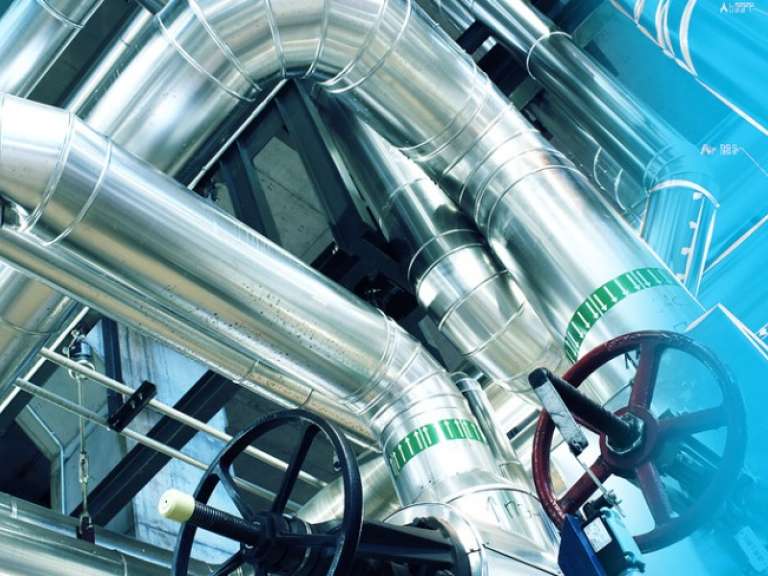Digital Solutions Empowering Modern Plants
Penny HitchinCloud-based digital solutions are empowering asset managers to collect and analyze more data from their plants that improves safety and profitability.

The era of the digital power plant has arrived. The rapid development of cloud technology is enabling increasingly sophisticated power plant operations. Combining big data, the Industrial Internet of Things, wireless mesh networks, and other cloud-based digital solutions provides tremendous value to asset management.
Advances in computing speed and capacity mean that management can collect and analyze greater volumes of information, and use those insights to improve operations. The development of low-cost, flexible wireless networks has opened up the potential for additional data collection from the heart of the power plant, increasing real-time insights into the way that processes and components operate. The deployment of wireless sensors and instruments means that data on temperature, pressure, flow, and vibration can be sent back to the control center for sophisticated software to interpret. This improves performance validation and predictive maintenance practices.
Companies are building cloud-based services with intelligent analytics to improve power-generation metrics for their customers and their assets. For example, calculations using plant sensors might show a curve with an uncertainty rate of one to two, or even as much as five, percent. By combining physics models, precision tests, and data reconciliation algorithms, these uncertainties can be dramatically reduced. This is critical because in a typical combined cycle plant operating in the US, an improvement of one percent in accuracy can be worth over half a million dollars per year.
As every asset manager knows all too well, variations in ambient and load conditions significantly affect gas turbine and combined cycle performance. Software modeling can be used to simulate the thermodynamics of the power plant under the likely range of conditions. Incorporating financial and environmental information allows managers to project operational costs with greater speed and accuracy. These projections can also incorporate any changes in conditions.
The availability of this information improves the accuracy with which the utility's traders can submit bids. For an existing power plant operating in a deregulated competitive sector, the accurate prediction of plant capacity and fuel consumption under expected conditions for the days ahead is essential to maintaining profitability. In the past, traders would look back at the historic price of operation to make a price. Now they have to bid into the future, looking at where the industry is going and what the likely contribution of renewable energy will be. Factors include projected demand and weather forecasts for two weeks in the future.
Traditionally, thermal power plant generation has been determined by load demand. However, as the renewable energy from intermittent sources increases, gas plants are called upon to provide flexible peak load. The predictive work will involve looking at the number of starts for the plant and determining the cost of stop–start generation. This helps plant management make tough decisions. For example, with these insights, management might decide to reduce load to a minimum, because the electricity price is so low that it does not pay to shut down the plant. This leaves the option open to ramp up and produce if an immediate need arises, which may provide a better return.
Increased number-crunching capacity and connectivity allow real-time information about the cost of fuel and the effects of weather (on wind and solar power, for example) to be easily factored into the equation. This informs how much thermal power needs to be on demand.
In the past, efficiency was the priority for combined cycle plants. However, when networks give priority dispatch to renewable sources, flexibility, start up time, and low load operation become key parameters. Operators will rely on emerging predictive software to provide answers. Traders making bids need the ability to make accurate predictions of future operational costs. Such bids are informed by data-generated predictions regarding how best to operate the asset over a two-week period.
In addition to enabling staff to improve operations and maintenance, digital solutions are changing the nature of many jobs within the facility. The maintenance technician is now as likely to be found analyzing data at a computer screen as prowling around the plant with a toolbox and oil can.
The digital power plant relies on the collection and analysis of data to understand and improve performance. Even small, incremental improvements can impact the bottom line, and asset managers are eager to utilize the new data sets that are transforming the way that plants operate. In the years ahead, more data sets will be available, providing better real-time analysis. Looking forward, as more data becomes available, real-time fine tuning will be possible. The digital power plant has arrived, and it is here to stay.
The technology adoption life cycle for power plants can be accelerated by addressing all stakeholders.
Sophisticated industrial facilities like power plants are increasingly turning to 3D visualization techniques to streamline plant operations and maintenance over the asset life cycle.
Alongside renewable energy technologies, the role of gas turbines in the 21st century electricity mix is assured.